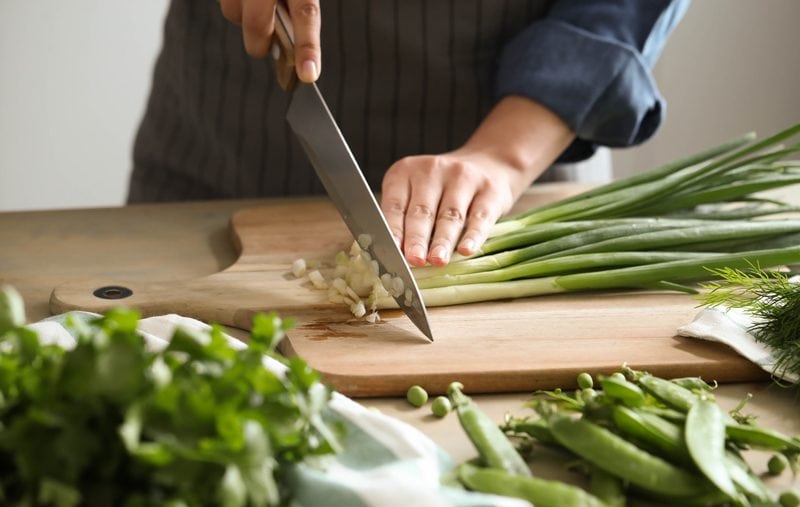Master the Art of Cutting with a Fork and Knife: Essential Tips for BBQ Enthusiasts
Written By James Morgan
For barbecue enthusiasts, knowing how to cut with a fork and knife is an essential skill. Whether you are diving into a juicy steak or slicing up grilled vegetables, mastering this technique ensures not only a pleasant dining experience but also showcases your culinary etiquette. In this guide, we will delve into the intricacies of using these essential utensils like a pro.
Many people overlook the importance of properly using a fork and knife. Not only does it enhance the dining experience, but it also ensures that you can savor every piece of your meal efficiently. With the proper technique, you can prevent food from slipping off your fork or avoid making unnecessary motions that can distract from the overall enjoyment of your meal. By mastering this skill, you can elevate your barbecuing experience to a whole new level.

The Basics of Fork and Knife Etiquette
Understanding the basics of fork and knife etiquette is crucial before diving into more specific techniques. Proper etiquette ensures both your safety and the enjoyment of the meal for everyone involved. Here are some fundamental tips:
- Always hold the fork in your left hand and the knife in your right hand.
- Place your index fingers on the back of the utensils to guide the pressure as you cut.
- Cut only one bite at a time; this ensures that your meal stays warm and fresh.
- When taking a break, place your fork and knife in the rest position on the plate.
- Practice makes perfect, so dont get discouraged if it takes a little while to get the hang of it.
Choosing the Right Knife
The type of knife you use can significantly impact your cutting efficiency. While there are many styles of knives, each designed for specific purposes, a good steak knife is indispensable for barbecue enthusiasts. Check out this guide on knife types to find the best one for your needs.

Step-by-Step Guide to Cutting with a Fork and Knife
Lets get into the nitty-gritty of how to cut with a fork and knife. By following these steps, you can ensure that your cutting is precise and efficient.
Step 1: Positioning
Hold your fork in your left hand with the tines facing down. Position the food so that it is stable on your plate. If you are cutting meat, identify the grain to make your cuts more efficient and tender.
Step 2: Cutting Technique
How to cut with a fork and knife involves applying the right amount of pressure. Hold the knife in your right hand, and use a gentle sawing motion to cut through the food. Avoid pressing too hard to prevent tearing the meat or pushing the food off your plate.
Step 3: Using the Fork
After cutting, use your fork to transfer the bite-sized piece to your mouth. Keep the tines down and maintain a steady grip. For those tricky bits of meat, using the side of the fork as a stabilizer can be incredibly effective.
Step 4: Practice Makes Perfect
Repetition is key when learning how to cut with a fork and knife. The more you practice, the more intuitive it will become. Consider practicing on different types of food to build muscle memory and gain confidence.

Common Mistakes and How to Avoid Them
Even seasoned barbecue enthusiasts can make mistakes. Here are some common pitfalls and tips on how to avoid them:
- Cutting Too Much At Once: Cut one piece at a time. This keeps your food fresh and prevents overhandling.
- Improper Grip: Ensure that you are holding your fork and knife correctly. A proper grip will give you more control and precision.
- Forgetting to Rest: It's easy to get caught up in the process. Remember to place your utensils in the rest position if you need a break.

Enhancing Your Dining Experience
Mastering the art of cutting with a fork and knife can significantly enhance your dining experience. Not only does it allow you to enjoy your meal to the fullest, but it also adds an element of sophistication to your barbecues. To further refine your skills, you can explore additional resources on proper knife techniques and safety. For more insights, check out this guide on knife safety.
Related Articles
FAQ
What type of knife should I use for barbecued meats?
For barbecued meats, a sharp steak knife is ideal. The serrated edge can easily cut through the charred exterior and tender interior of the meat. For more information, you can refer to this guide on knife types.
How can I improve my cutting skills?
Practice is key. Regularly using your fork and knife to cut a variety of foods will help improve your technique. Additionally, focusing on your grip and the pressure you apply will make a significant difference.
Should I cut all my food at once?
No, it's better to cut one piece at a time. This keeps your food fresh and ensures each bite is enjoyable.
As an Amazon Associate, I earn from qualifying purchases.
As an Amazon Associate, I earn from qualifying purchases.



